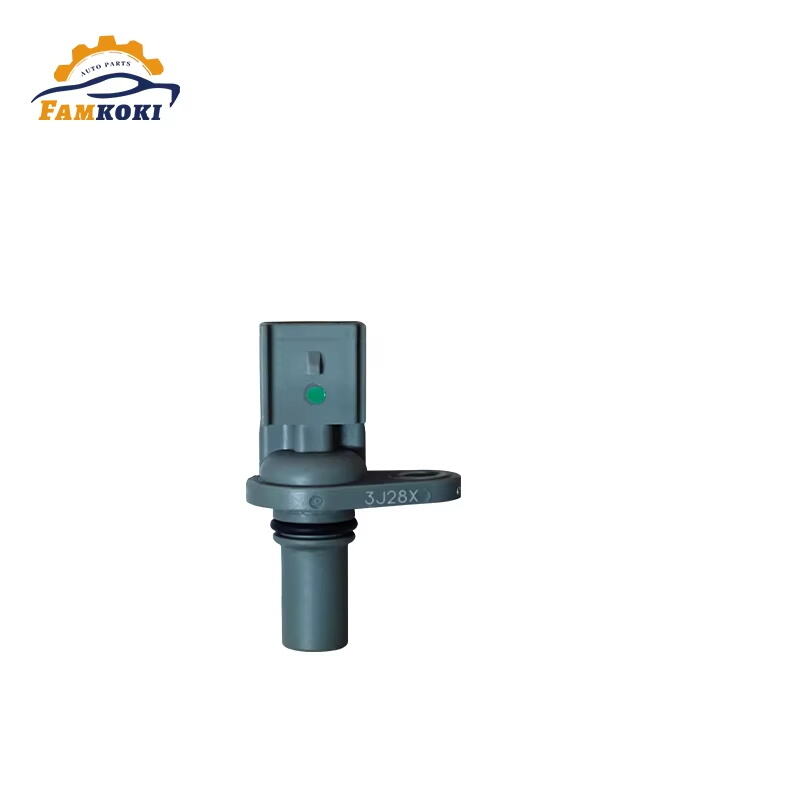Introduction to Oxygen Sensors and Their Role in Engine Performance
Oxygen sensors are essential components in modern internal combustion engines, tasked with measuring the concentration of oxygen in exhaust gases. This data is utilized by the engine control unit (ECU) to optimize fuel injection, ensuring efficient combustion. The precise measurement of oxygen levels is crucial because an optimal fuel-to-air ratio must be maintained for the engine to perform at its best. The effectiveness of these sensors directly impacts engine efficiency, contributing to better fuel economy and reduced emissions. As vehicles increasingly aim for environmental compliance, the role of oxygen sensors becomes even more significant.
The importance of oxygen sensors in engine performance is profound. They are instrumental not only in enhancing fuel efficiency but also in minimizing emissions and ensuring smooth engine operation. Without accurate oxygen readings, the ECU cannot adjust the fuel injection accurately, leading to potential issues such as engine misfires or increased pollutant emissions. By maintaining the ideal combustion conditions, oxygen sensors help in prolonging the engine's lifespan and optimizing its overall functionality. Their role in the complex ecosystem of automotive performance underscores their indispensability in modern vehicle engineering.
Optimal Fuel-Air Mixture
Oxygen sensors play a crucial role in ensuring an optimal fuel-air mixture in internal combustion engines. By providing real-time feedback on oxygen levels in the exhaust, these sensors enable the Engine Control Unit (ECU) to precisely adjust fuel delivery. This real-time adjustment is essential for achieving optimal combustion, which significantly enhances vehicle performance. According to research published in the Journal of Material Science, optimal combustion can lead to greater engine efficiency, reducing the likelihood of unburnt fuel and subsequently improving fuel economy.
A proper fuel-air mixture is pivotal to combustion efficiency, which directly influences engine performance. With improved combustion efficiency, engines can produce more power and torque, resulting in better acceleration and a smoother driving experience. The ability of oxygen sensors to ensure a balanced air-fuel ratio not only enhances engine output but also contributes to reducing harmful emissions. This process is critical as it not only assists in maximizing power but also plays a vital role in minimizing pollution, thereby ensuring that vehicles meet environmental standards.
Reduced Emissions
Oxygen sensors play a crucial role in reducing harmful exhaust emissions by managing the air-to-fuel ratio in vehicles. By ensuring the mixture is optimal, these sensors facilitate complete combustion of fuel, thereby minimizing pollutants such as hydrocarbons, carbon monoxide, and nitrogen oxides. This process is integral to emissions control systems in modern vehicles, as it directly affects the efficiency and output of combustion engines.
Furthermore, oxygen sensors support environmental protection by enabling vehicles to meet stringent regulatory standards set by entities like the Environmental Protection Agency (EPA). By optimizing combustion and lowering emissions, oxygen sensors help cars comply with emissions legislation and contribute significantly to reducing their environmental footprint. This compliance not only supports environmental efforts but also ensures that vehicles can be legally operated in areas with strict emissions requirements.
Improved Fuel Efficiency
Oxygen sensors are fundamental in enhancing fuel efficiency by providing accurate data to the engine control unit (ECU). This data allows the ECU to make precise real-time adjustments to the air-fuel mixture. According to various studies, well-functioning oxygen sensors can improve a vehicle's fuel efficiency by 10-15%. These sensors ensure that the engine operates efficiently, using just the right amount of fuel needed for any given driving condition. This optimization not only saves fuel but reduces the overall wear and tear on the engine components.
In the long term, the cost savings associated with improved fuel efficiency can be substantial. Not only does this result in fewer trips to refuel, but it also helps in extending the life of the engine. This extension occurs as the engine components suffer less stress and wear, potentially leading to reduced maintenance costs over time. By preventing issues such as misfiring and rough idling, which are common signs of a faulty oxygen sensor, drivers can avoid expensive repairs. Such proactive maintenance measures underscore the environmental and economic benefits of keeping oxygen sensors in optimal condition.
Oxygen Sensors and Engine Longevity
Oxygen sensors play a crucial role in extending engine life by maintaining optimal engine performance. These sensors provide precise data to the Engine Control Unit (ECU), enabling it to adjust the air-fuel mixture accurately. This ensures the engine runs at its best, preventing issues caused by improper fuel mixtures such as carbon build-up or misfires. For instance, when too much or too little fuel is injected, it can lead to rich or lean mixtures, respectively, harming the engine and increasing emissions. Regular and accurate sensor data help avoid these pitfalls, promoting engine longevity.
Maintaining optimal engine performance requires regular oxygen sensor checks. Experts recommend testing them every 30,000 to 50,000 miles to ensure they are functioning correctly. This proactive measure safeguards the engine's health, preventing costly malfunctions and potential breakdowns. Regular maintenance of oxygen sensors is not just about maintaining fuel economy but also about preserving engine integrity over time. By doing so, drivers can avoid frequent repairs and extend the life of their vehicles, ultimately saving money and reducing ecological footprints thanks to fewer emissions.
Enhanced Driving Experience
Oxygen sensors play a crucial role in enhancing the driving experience by ensuring smoother acceleration and consistent power delivery. This precise control is achieved through the sensor's ability to provide real-time data to the engine's computer system, which optimizes the fuel-air mixture for combustion. As a result, drivers enjoy a more responsive ride, even during long journeys or challenging driving conditions.
Furthermore, maintaining well-functioning oxygen sensors is key to avoiding common engine problems like misfires and rough idling. A sensor in good condition ensures that the engine runs smoothly, leading to fewer interruptions and less inconvenience for the driver. Regular checks help to maintain sensor health, thereby supporting efficient engine operation and a more enjoyable driving experience overall. Proper sensor maintenance not only extends the life of the sensors themselves but also contributes to the longevity and reliability of the vehicle.
Conclusion
In summary, oxygen sensors are indispensable components in ensuring the optimal performance and longevity of vehicle engines. By accurately regulating the fuel mixture, these sensors play a critical role in minimizing harmful emissions and enhancing fuel efficiency. Regular maintenance and timely checks of these sensors are paramount for drivers, as proper upkeep can significantly prolong vehicle life and maximize performance. Such diligence in maintenance ultimately translates into substantial cost savings, reaffirming the value of prioritizing oxygen sensor health for a seamless driving experience.
FAQ
What is the primary function of an oxygen sensor in a vehicle?
The primary function of an oxygen sensor is to measure the concentration of oxygen in the exhaust gases and provide this data to the engine control unit (ECU) for optimal fuel injection.
How do oxygen sensors contribute to fuel efficiency?
Oxygen sensors contribute to fuel efficiency by providing accurate data that allows the ECU to make precise real-time adjustments to the air-fuel mixture, ensuring the engine uses the optimal amount of fuel.
Why is maintaining the oxygen sensor important for engine longevity?
Maintaining the oxygen sensor is critical for engine longevity as it helps prevent incorrect air-fuel mixtures, which can cause engine issues like carbon build-up or misfires, ultimately promoting engine health.
How often should oxygen sensors be checked?
Oxygen sensors should be checked every 30,000 to 50,000 miles to ensure they are functioning correctly, thereby safeguarding the engine's health and efficiency.
 EN
EN
 AR
AR
 FR
FR
 KO
KO
 PT
PT
 RU
RU
 ES
ES


